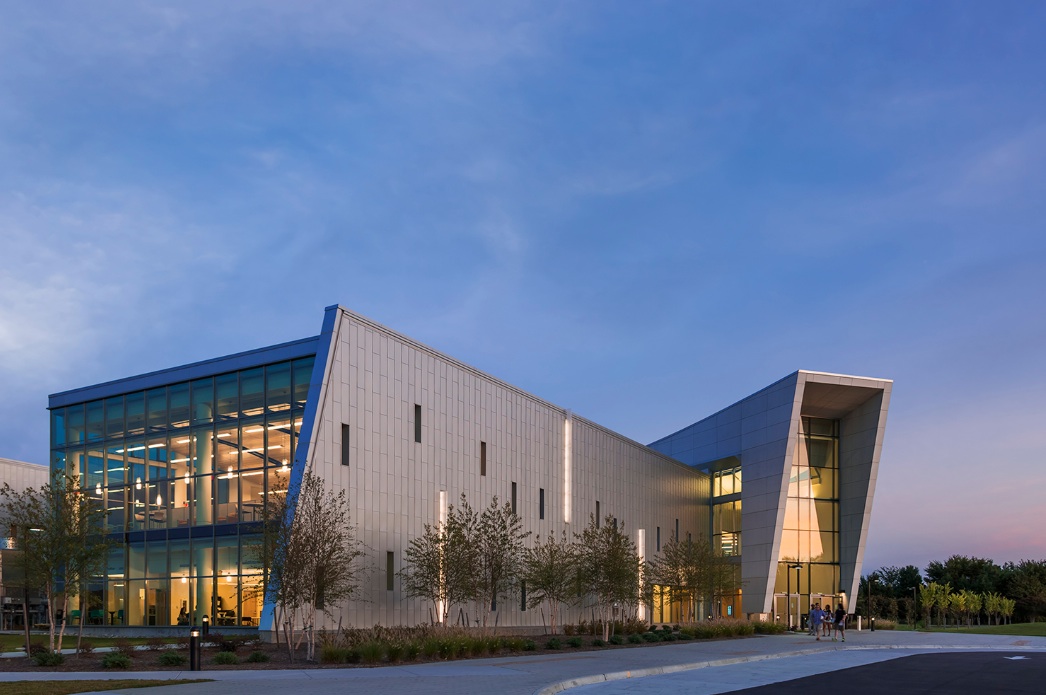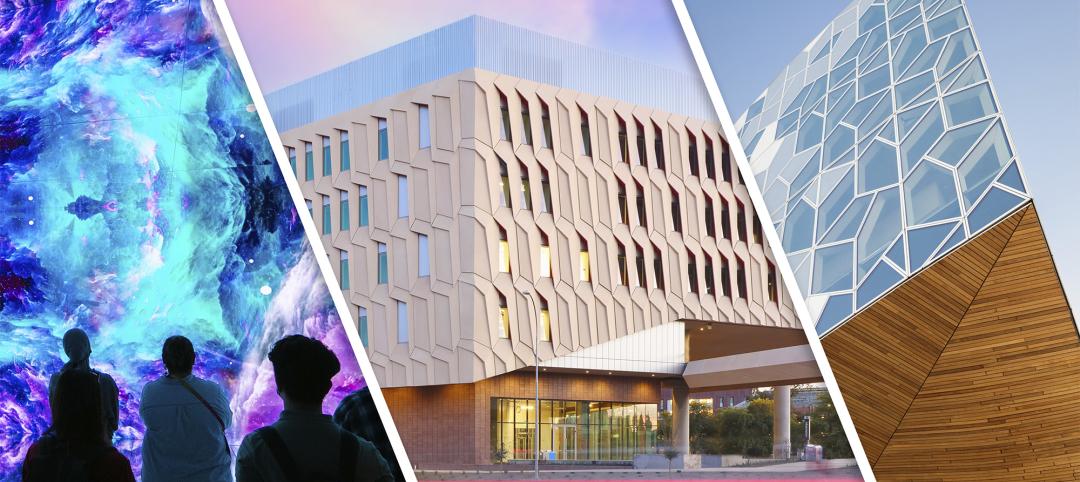According to expert forecasters, multifamily projects, the Panama Canal expansion, and the petroleum industry’s “shale gale” could be saving graces for commercial AEC firms seeking growth opportunities in an economy that’s provided its share of recent disappointments.
In a spring industry roundtable hosted by Reed Construction Data, economists from the American Institute of Architects, the Associated General Contractors of America, and RCD discussed the mixed signals in commercial design and construction, and the seemingly perennial predictions of a breakthrough.
The overall conclusion, according to Bernard Markstein, U.S. Chief Economist for RCD? The economy’s improving and employment is growing, but both ought to be better by now.
Nevertheless, Markstein identifies several positives in the overall picture. “The Federal Reserve has started to taper its activity, without too much impact on interest rates; these remain historically low,” he says. “Lenders are slowly loosening lending standards. We’ve already seen most of the impact of sharp cuts in federal spending, and those should be done for now.”
Multifamily continues to be a particularly bright spot, according to Markstein. Other sectors remain more problematic, with a brutal winter limiting overall activity in many regions.
TOP ARCHITECTURE FIRMS
2013 Architecture Revenue ($)1 Gensler $883,221,1892 Perkins+will 356,360,0003 NBBJ 196,784,0004 Kohn Pedersen Fox Associates 177,715,0005 Callison 160,912,3986 Perkins Eastman 155,000,0007 ZGF Architects 128,101,1368 Populous 111,754,0009 Corgan 95,097,37210 MulvannyG2 Architecture 73,200,000TOP ARCHITECTURE/ENGINEERING FIRMS
2013 A/E Revenue ($)1 Stantec $450,836,5752 HOK 400,000,0003 Skidmore, Owings & Merrill 334,525,3464 HDR 303,000,0005 HKS 255,063,6246 CannonDesign 213,000,0007 RTKL Associates 205,373,0008 SmithGroupJJR 162,973,0009 Hammel, Green and Abrahamson 119,100,00010 DLR Group 110,000,000
Kermit Baker, Chief Economist for the AIA, admits that “nonresidential construction has had a hard time building momentum behind the recovery,” and that the AIA Architecture Billings Index keeps hitting soft spots. Reconstruction, rather than new builds, currently represents a larger-than-usual share of the business, at about 25% of nonresidential construction activity.
Baker predicts that firms doing lodging, office, retail, and manufacturing projects should see decent results this year, with hotel construction especially hot (tracking at 37% growth from February 2013 to February 2014, according to the U.S. Census Bureau). Communication-related construction is another booming area, with growth at more than 50% year over year.
Giants 300 coverage of Architecture Firms brought to you by Sage www.sageglass.com
However, some sectors that represent bread-and-butter business for many top architecture firms are looking grimmer, especially healthcare (off about 4% from February to February) and education (down about 7%). Baker says project financing remains “a chronic problem.”
He believes the long-range outlook is better, however. “New design contracts have been growing, and those stats lead construction. Our member firms are building up more work.”
Ken Simonson, Chief Economist for the AGC of America, reported that his group’s members think the manufacturing, retail/lodging/warehouse, private office, and healthcare sectors should grow this year compared with 2013. Most members are feeling positive overall, he says. “For the first time, two-thirds of our respondents expect the market to upturn either this year or next year,” Simonson says. “In previous years I have been more optimistic than our members. Not this year.”
Tighter government spending on education and infrastructure, consumers’ interest in online buying, and companies’ drive to shrink office space per employee have all restrained commercial AEC growth, according to Simonson. But there are positive trends, as well. In addition to acknowledging the continued strength of the multifamily sector, he says big infrastructure projects provide ample opportunities for AEC firms positioned to take advantage of them.
In particular, Simonson points to massive development related to the so-called “shale gale”: exploitation of America’s petroleum reserves through advanced extraction technologies (notably, fracking). The employment is drawing large numbers of workers to areas that have previously been sparsely populated. Primary “shale gale” zones, or “plays,” include the Bakken (North Dakota/Montana/Saskatchewan), the Niobrara (Kansas/
Wyoming), the Permian (Texas/New Mexico), the Eagle Ford (Texas), the Haynesville (Texas/Louisiana), and the Marcellus (West Virginia/Pennsylvania/New York).
Firms that do large infrastructure projects related to roads, site prep, piping, rail lines, and drilling obviously will benefit, but there’s also an urgent need for housing (typically, modular dorms and extended-stay hotels), recreational facilities, and food service. Nearby existing towns also benefit, not only in terms of hotel, apartment, and restaurant construction but also retail, healthcare, education, and government projects. The burgeoning industry entails environmental controversy, turbulent politics, and an uncertain future, but for now, building is proceeding at a rapid clip.
Simonson also points to upcoming development in U.S. port cities on both coasts and the Gulf of Mexico linked to expansion of the Panama Canal, which is set to be completed next year. Again, in addition to big infrastructure, related facilities will be needed: warehouses, terminals, equipment garages, and even data centers. Incoming workers may also need new housing and services facilities. Commercial AEC firms with the right capabilities could reap big gains.
Read BD+C's full 2014 Giants 300 Report
Related Stories
Smart Buildings | Jul 25, 2024
A Swiss startup devises an intelligent photovoltaic façade that tracks and moves with the sun
Zurich Soft Robotics says Solskin can reduce building energy consumption by up to 80% while producing up to 40% more electricity than comparable façade systems.
Great Solutions | Jul 23, 2024
41 Great Solutions for architects, engineers, and contractors
AI ChatBots, ambient computing, floating MRIs, low-carbon cement, sunshine on demand, next-generation top-down construction. These and 35 other innovations make up our 2024 Great Solutions Report, which highlights fresh ideas and innovations from leading architecture, engineering, and construction firms.
Airports | Jun 3, 2024
SOM unveils ‘branching’ structural design for new Satellite Concourse 1 at O’Hare Airport
The Chicago Department of Aviation has revealed the design for Satellite Concourse 1 at O’Hare International Airport, one of the nation’s business airports. Designed by Skidmore, Owings & Merrill (SOM), with Ross Barney Architects, Juan Gabriel Moreno Architects (JGMA), and Arup, the concourse will be the first new building in the Terminal Area Program, the largest concourse area expansion and revitalization in the airport’s almost seven-decade history.
Products and Materials | May 31, 2024
Top building products for May 2024
BD+C Editors break down May's top 15 building products, from Durat and CaraGreen's Durat Plus to Zurn Siphonic Roof Drains.
Biophilic Design | May 6, 2024
The benefits of biophilic design in the built environment
Biophilic design in the built environment supports the health and wellbeing of individuals, as they spend most of their time indoors.
Architects | May 2, 2024
Emerging considerations in inclusive design
Design elements that consider a diverse population of users make lives better. When it comes to wayfinding, some factors will remain consistent—including accessibility and legibility.
Airports | Apr 18, 2024
The next destination: Passive design airports
Today, we can design airports that are climate resilient, durable, long-lasting, and healthy for occupants—we can design airports using Passive House standards.
Airports | Feb 13, 2024
New airport terminal by KPF aims to slash curb-to-gate walking time for passengers
The new Terminal A at Zayed International Airport in the United Arab Emirates features an efficient X-shape design with an average curb-to-gate walking time of just 12 minutes. The airport terminal was designed by Kohn Pedersen Fox (KPF), with Arup and Naco as engineering leads.
Urban Planning | Feb 5, 2024
Lessons learned from 70 years of building cities
As Sasaki looks back on 70 years of practice, we’re also looking to the future of cities. While we can’t predict what will be, we do know the needs of cities are as diverse as their scale, climate, economy, governance, and culture.
Products and Materials | Jan 31, 2024
Top building products for January 2024
BD+C Editors break down January's top 15 building products, from SloanStone Quartz Molded Sinks to InvisiWrap SA housewrap.

















